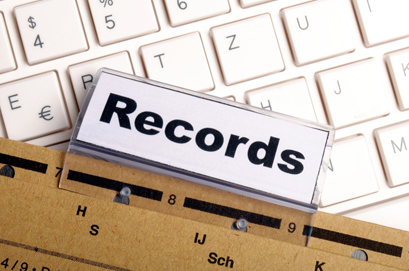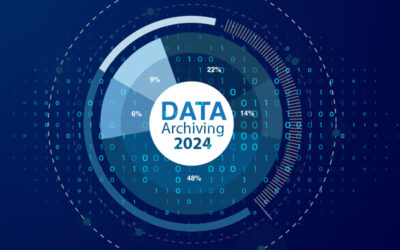 Healthcare record scanning is becoming a fundamental part of the medical industry now as offices and facilities migrate to EMRs and digital technology. Providers committed to practicing responsible medicine prioritize record keeping, ensuring accuracy of information therein. It is this that helps them provide safe and effective treatment to their patients. The documents can be made digital and stored safely in the required format through document conversion. Digitized medical records are more effective than their paper-based counterparts that are more time consuming to manage. They help hospitals and physicians to improve overall efficiency and quality of treatment.
Healthcare record scanning is becoming a fundamental part of the medical industry now as offices and facilities migrate to EMRs and digital technology. Providers committed to practicing responsible medicine prioritize record keeping, ensuring accuracy of information therein. It is this that helps them provide safe and effective treatment to their patients. The documents can be made digital and stored safely in the required format through document conversion. Digitized medical records are more effective than their paper-based counterparts that are more time consuming to manage. They help hospitals and physicians to improve overall efficiency and quality of treatment.
Scanning medical records is a process that demands expertise and so it is always advisable to obtain the support of professional document conversion services. This will speed up the digitization process and also ensure accuracy and efficiency for your office processes.
Best Practices
Here are some tips to remember when preparing for your EHR transition.
- Analyze: Identify which documents need to be scanned and digitized. Also consider how it will be integrated in the new system. You need to have a clear plan regarding what information will be transferred to your EHR and how it will be transferred.
- Inventory: An inventory should be created highlighting all the charts that are to be converted. Charts should be separated by encounter type. Always maintain a separate holding location designed for each type of encounter.
- Preparation: Any torn pages or documents must be compiled, prepared, and stapled before scanning. This procedure is time consuming but provides clean, clear and useful documents.
- Scanning: This phase requires great attention and records should be scanned carefully. A good scanner is necessary for bulk scanning. A high- speed scanner facilitates a complete move to electronic patient records in an efficient manner. This will save time as you go through each patient’s chart. Black and white as well as colour documents can be scanned. With medical ID scanner and EMR software, demographic information of patients can be imported directly from their driving license or state ID. Signature pads or Digital pens help in capturing the signature of the patients directly onto electronic forms and records.
- Quality Control: The scanned documents must be inspected visually to ensure that they are complete, clear and usable. If necessary, the scanned records should be compared to the original documents to ensure accuracy. The number of original papers must be compared to the number of scanned records to make sure that every document was scanned.
- Index: It is another critical element of scanning medical documents. In order to be found easily, the index utilizes an identifier such as the patient’s DOB, patients ID, social or patient number.
- Import data: The scanned medical records that have been indexed are entered into the electronic medical record system. The imaged information is integrated into the EMR or EHR system.
Organizing and Filing Medical Records
The scanned records can be saved to a file or directory-based system such as a networked drive or storage location (e.g. I – drive), or they can be saved to a database or in a document/ content management system. The records should not be saved to thumb drives or the hard drive (C- drive) on a personal computer. Records that are to be destroyed at the end of their retention period must be identified at the beginning of the scanning process and the remaining important documents should be filed.
- Establish a file plan or structure for the drive/ directory that will hold the incoming records. This will provide a clear idea regarding the amount of information coming in and plan how much additional information will be stored over time.
- Save individual documents to folders. Include the year the records were either created or received in the folder title.
Any type of document including the following can be processed by using advanced scanning technology:
- Medical insurance cards
- Explanation of Benefits (EOB)
- Form 1500
- Accounts Receivables
- HCFA forms
- Medical billing forms
- Proprietary enterprise forms
Electronic storage of patient records has many benefits:
- Paper records are often misplaced or lost. It is important to record the details of patients for further treatment. Digitization helps in keeping the records of the patients in a systematic way.
- Conversion of patient records into digitized format prevents loss of data. In the long-term, there are chances that paper-based medical reports may get damaged, whereas digitization helps in maintaining the records for a longer period of time.
- It facilitates data transfer. Medical reports can be faxed, copied or transferred to other doctors for further treatment.
- It helps doctors to refer to the history of patients at ease.
Any healthcare organization should have clear-cut standards for data entry, which will help ensure consistency and uniformity of medical charts and reporting. These apply to aspects such as the fonts used, abbreviations, address formats, numbers, and documenting patient diagnosis, specific procedures, making corrections and amendments and so on. Small differences in the way such data is entered may have considerable negative impacts such as delays in service, confusion of staff and poor EHR adoption. On the other hand when standards are followed, the required information can be quickly accessed and used effortlessly. This will in turn ensure long term success for your electronic health record system.
Document and data volumes steadily grow in healthcare settings and it is of utmost importance that the data is captured and stored as quickly as possible. With the support of a document conversion company, large volume healthcare records can be digitized and maintained in a centralized database ensuring easy access and sharing among various providers. These services prove handy for both archive/back file conversion and day-forward conversion, reducing considerable workload for in-house staff.



